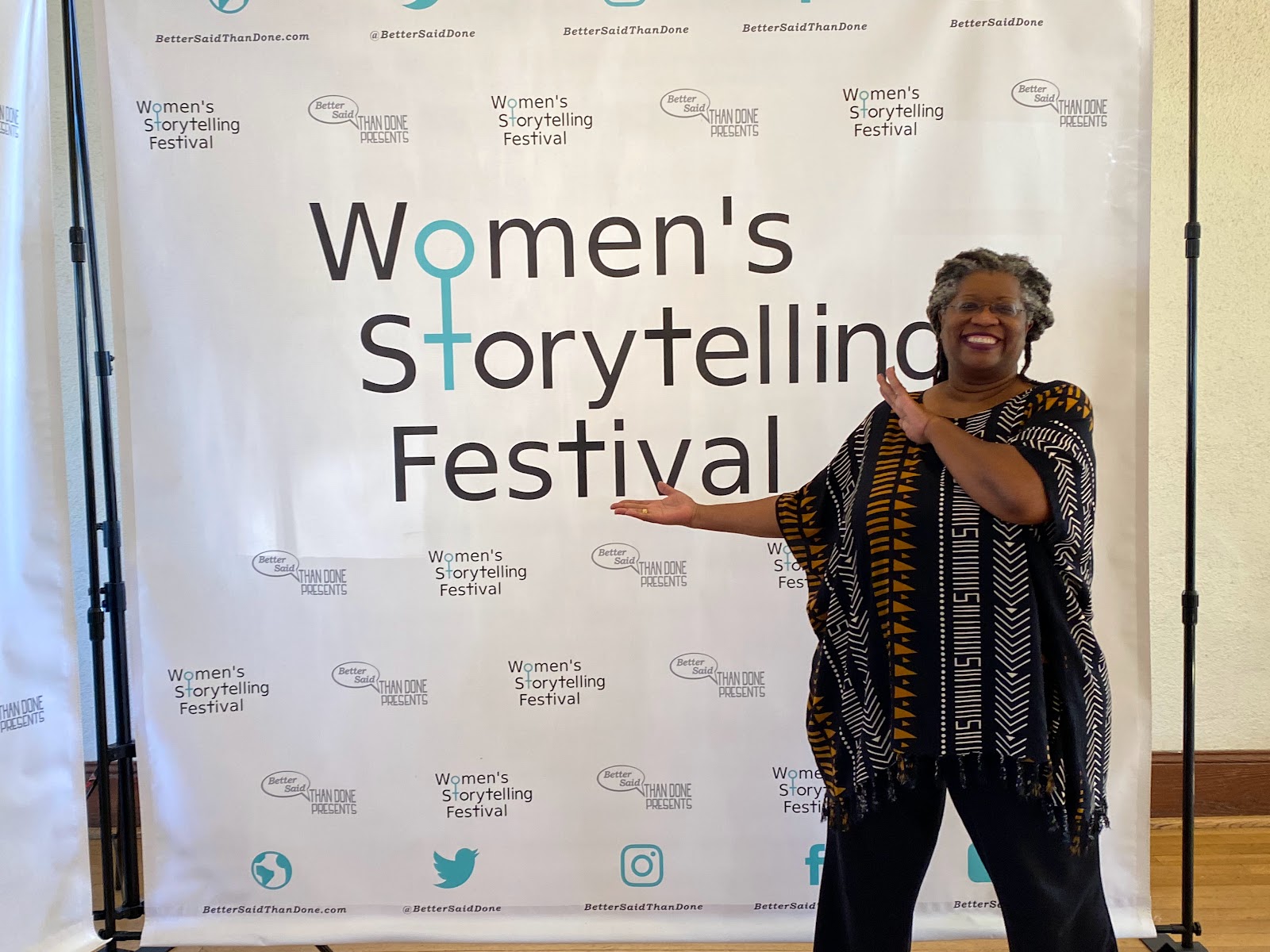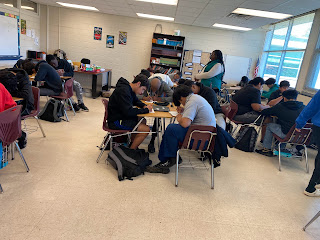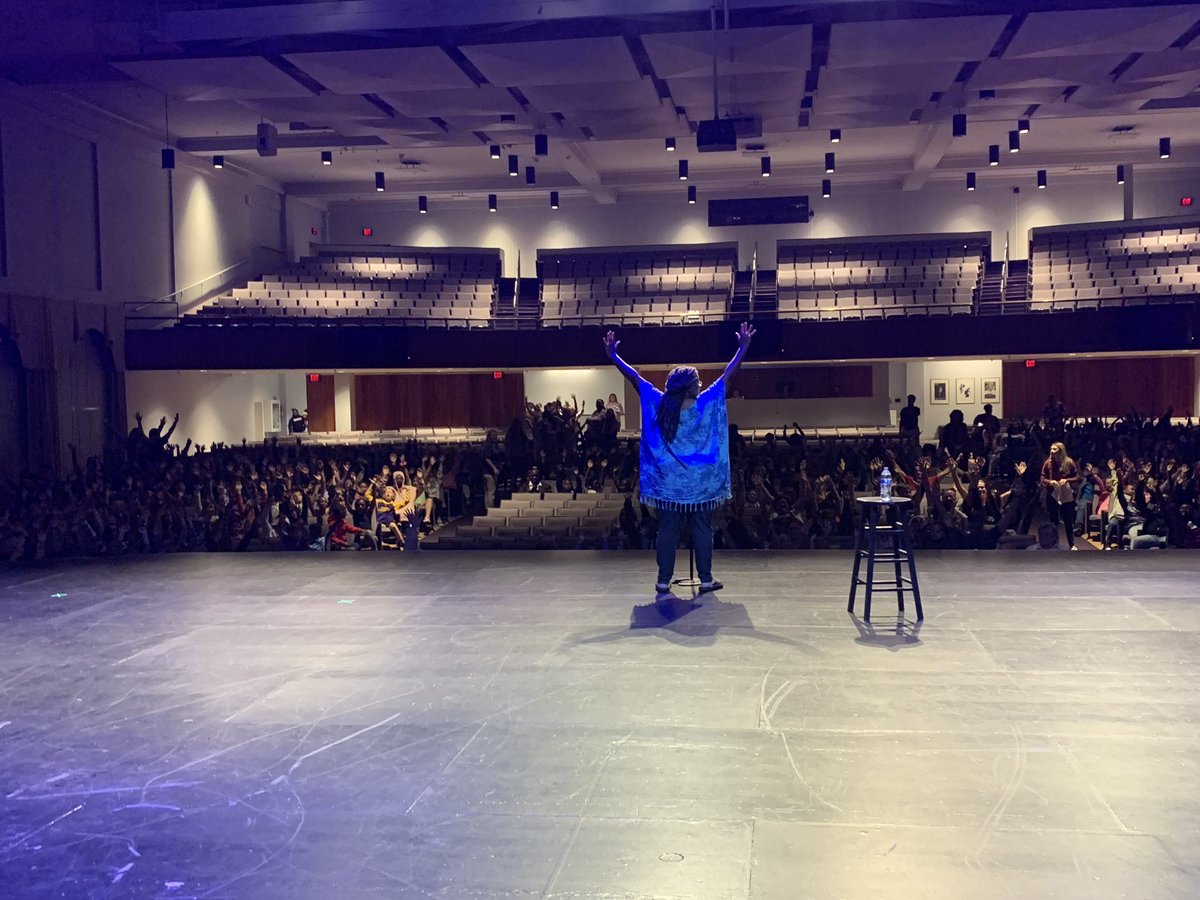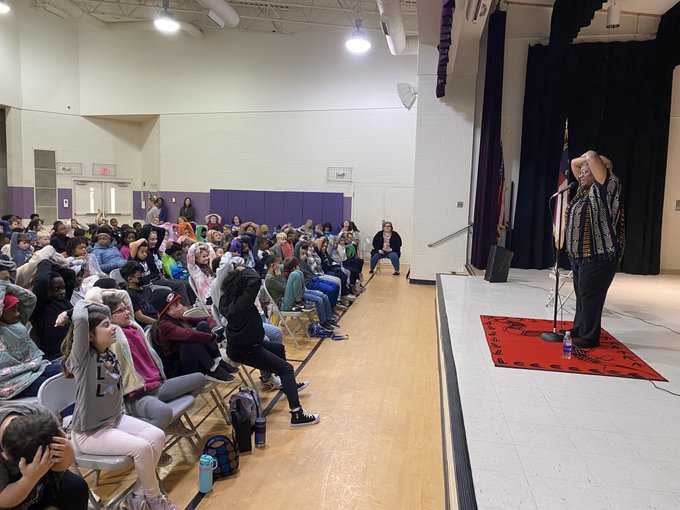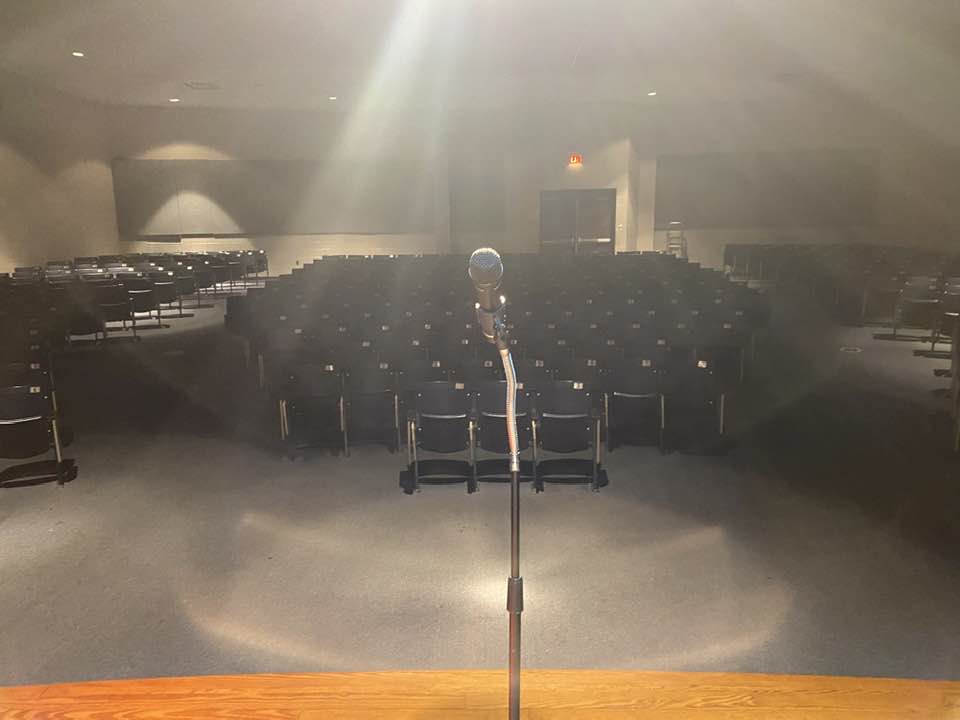Sometimes storytelling is easy. You walk into a space and the audience is full of people who have chosen to be there. They are excited to see you in particular, or someone else there, and they can't wait to start. They know exactly what they are in for and they are strapped in and ready for the ride!
Sometimes storytelling is about satisfying an interest. You walk into the space and the audience is captive, but enthusiastic - think schoolassemblies or conferences. They have some idea of what you are going to do, or none at all, but they understand why they are there and are at least curious about what is happening.
Sometimes storytelling is about telling to your ancestors - Thank you, Tim Tingle. You show up and there are fifty chairs and only three people are sitting in them. My philosophy about random public performances is that as long as the audience outnumbers me, it's a show. That means I will perform my lungs out whether there are two people in the audience or two hundred. Tim Tingle says that if you have a show where not many people show up it is because your ancestors wanted to see you work so they took the chairs. I love that.
My ancestors have seen me perform a great deal!
Sometimes storytelling is a nightmare. You show up and they have put the storytelling area in a stall between an ice cream truck playing tinny tunes, and a petting zoo. You are near the mainstage where they will have bands all day playing really loud music. You have no amplification. There is no place for the listeners to sit, and you have a one hour shift. (I discovered that if you charge the venue a goodly amount, they either won't hire you or they give you a better situation.) I leave these events and make a note to never say "yes" again.
Then there is the kind of scenario I found myself in a couple of weeks ago.
I think about this as storytelling in the trenches. It is where you have been hired into a venue by someone who is determined that the kids in this area need storytelling. Nobody asked if they wanted to hear stories or anything like that. There is no culture of the kids in the area coming to the venue for anything but recreation and nothing short of exotic animal shows or magicians.
So, I roll up to this venue. It is small - not a problem.
They have set up nine chairs - not a problem.
The room has tables, foosball, pool, and there is an area for basketball through a set of double doors - not a problem.
There are five adults sitting in the back. Nobody is sitting in these nine plastic chairs near me.
There are two pre-teen looking boys playing with the pool table equipment. There is also one girl who looks like a young teen, having some kind of snack.
When I arrive, the kids pay me no attention. The woman at the front desk says, "What are you gonna do?"
I explain.
"Oh. Okay. Set your stuff up over there." She points.
I have my sound system. I go over and set it up in front of these chairs. My past experience with these situations tells me that some pre-teens or teens will not come over and sit in the chairs because they are too cool to sit and listen to a storyteller, but they will happily listen while pretending to do something else. So, making sure everyone in the room can hear me is a must.
I assume this is going to be an ancestor show.
Time arrives, and still, nobody is there. So, one of the women in the rec center excuses herself and leaves. I announce I will happily tell to the staff. There are five adults in the room and these three teen/preteens, so that is more than enough. I am told to wait.
Ten minutes later, the woman returns and she has got six grouchy teenagers with her. The three other teen/preteens stop what they are doing, and sit in the plastic chairs.
During the entire event to follow, Teens/preteens trickle into the room, and not only do they fill up the chairs, but they have to sit at the benches at the long tables behind the plastic chairs. About half of them come in and exchange words with the others. Sometimes friendly...sometimes not.
Let us be clear about what is happening.
They are here for the snacks that will be available after the event. That is what they are expecting.
Over the course of the next forty minutes, I engage in a battle with the audience.
First - I must tell stories that they find worth listening to despite being bribed with snacks.
Second - I must not tip them over into aggression. This is a possibility because it is obvious some of the kids have beef with each other. As new teens join the group, there is a moment where I must stop telling as they shuffle around and reestablish the pecking order in the room.
There is a battle playing out in the background that has nothing to do with me. These kids are on a boil with each other, and I don't know why.
One kid, in particular, is being snarked at. They are saying things like, "You're slow!" and "Don't even look at me!"
The girls who come in make that smacking sound with their mouths when they see other members of the group. The guys are of every size you can imagine from huge to small but clearly not little kids, but they could all be about the same age - genetics.
The kid everyone is piling on is named "Sincere", but everyone calls him Sin. He loves being called Sin and informs me almost immediately that this is who he is. His twin sister, who looks to be older than him by a couple of years, but obviously isn't, is named "Success". She is clearly the put together one in that duo.
I start with Morgan and the Pot of Brains because of all of the name calling.
Right at first one of the big guys is trying to play the clown and distract from the tale. I make the deal with the audience that I have to make sometimes.
"Guys, I'm only here for 45 minutes. I promise I won't be here longer than that. Let me do my job. You might even have a good time. After I'm done, the rest of the day is yours."
The big guy quiets. I think he was surprised I called him on it. The rest of the group stops paying attention to him, and after he is unable to get the attention he needs, he starts watching as well.
One of the girls in the front spends most of the performance surfing on her phone and sharing what she is reading with the girl next to her. They giggle at inappropriate times, but if I make a scene about these two noncompliants, it isn't worth the fight. What am I going to do? Demand her phone? The other kids are giving her looks. They know she is being rude. The other adults don't intervene. This girl could be a social timebomb. If I confront this behavior, things could get out of hand.
The rest of the audience is with me, and we end up having a great time.
I get to the part of Morgan and the Pot of Brains where Morgan can't solve the riddles.
Sincere, the kid everyone has mocked as being stupid when they saw him does something no other kid has done in the years I have been telling this story. He figures out the riddles the second he hears them. They are obvious to him. Not only that, he is keyed into the performance on a basal level. His eyes never leave me. There are several other kids like this as well. They have left the building and they are walking through story with me. The adults are not bothering with the kids. They are also walking with me through story.
The woman who organized the story need, was there. She wanted me to do tongue twisters with this group. I had not prepared the ground for that, but she asked, she's paying, so I did. The kids were non-responsive to them. She was disappointed!
She'd seen me do tongue twisters with elementary school students earlier. Her grandchildren had been in the audience. She was amazed at how that one simple thing changed her grandkids. They started looking for tongue twisters and practicing them. They were speaking more to each other and their parents. She wanted the kids in this group to have the same experience. I get that. Unfortunately, Storytelling doesn't work like that. Different audiences key into different things, and different audiences need different kinds of input. It isn't magic.
When the set was over, I asked the kids what they wanted to do. Several of them snickered and said, "Go to college."
I asked what they wanted to study there. They stared at me as if such a thing had never occurred to them.
I asked what they liked to do. I got the usual - play sports, but none of them offered an academic response. Most just stared blankly.
This doesn't mean they haven't thought about it. It just means they weren't prepared to say anything like this out loud in present company.
They did ask a few questions when we were done...not when I asked if they had questions, because nobody did at that moment, but after the bulk had gone for snacks. A few of them came up to me and asked quietly.
They wanted to know if this was really my job. They asked where I was from - they hadn't started listening when I explained that earlier. They told me they were going to look for me online. One of them asked me to sign her skin.
As I finished packing up, a commotion started between the kids. There was yelling, the threat of violence, and Sin and Success backed out of the building as tempers flared.
"Don't you ever touch me again!" and other things were yelled.
There was an exodus of most of the teens. They all ran out to the parking lot. A tall gentleman ran out there as well.
I continued to pack my stuff. As I did, one of the adults who'd wandered in during the performance spilled the tea.
Sin has been banned from the center for striking a staff member. She was shocked to see him there. He is bad news - violent, disrespectful, dangerous to others. (He was one of the original kids playing over at the pool table) She was the staff member he struck. She quit after that.
Success is the opposite of Sin. Everyone loves her, but she is protective of her brother.
Sin has beef with lots of other kids. He doesn't go to school, and he is a nuisance to everyone.
My heart broke for Sin. He clearly needs someone to help him find another way, but it doesn't appear he has that. He is as convinced as Morgan was that he is bad and stupid.
The adults in the room were surprised at how well the teens did sitting and listening. They were apologetic about the one girl phone surfing, and the girl who kept humoring her. They pointed out that some of the kids were watching me like a laser.
The adults loved the performance and they were impressed I could hold the teens' attention.
I am always surprised when people's biggest surprise is that I can hold kids' attention for long periods of time. From principals to parents, people are surprised by it. Heck, organizers are surprised I can hold adults' attention!
I guess this is why people think there has got to be magic involved.
Anyway, I finished and walked out of the building. There were a few teens still there.
They told me that I was good at telling stories, they told me which ones were their favorites, and they wanted to help me with my stuff. I let them. Then I left.
On the way home, I had one of those drives where I reviewed the experience in my head. I came to a conclusion...
Darlene was right. They needed stories. If I am ever invited back to that venue, I will happily return.
Happy telling.
















